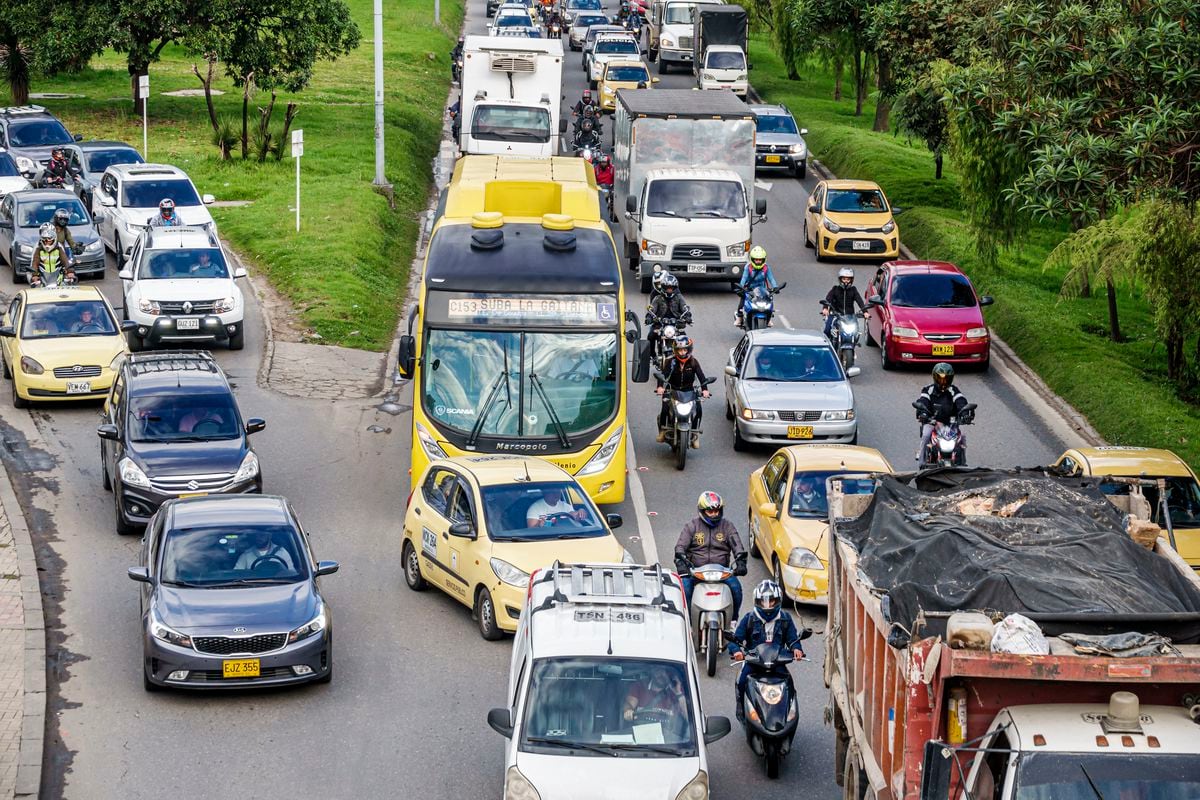EL PAÍS offers the América Futura section open for its daily and global informative contribution on sustainable development.
If you want to support our journalism, subscribe
here
.
Marina Sánchez moved from Spain to Bogotá four years ago.
She assures that buying a bicycle was one of the best decisions she made.
"Besides, if I can walk, I do."
In Bogotá, talking about the weather and the traffic jam is the norm in any elevator (and in traffic jams themselves).
For this reason, Sánchez was not surprised that the Colombian capital occupies sixth place in the ranking of the cities with the worst traffic in the world, according to the INRX Global Traffic Scorecard study.
“It is true that it is a very bad situation, especially at rush hour and from one end of the city to the other,” says the 33-year-old.
3,700 kilometers away, in Monterrey, Mexico, Gladys Bañuelos Gonzalez, 32, does not seem surprised by the eleventh place in her city.
"I look for any strategy to avoid key hours because it takes me an hour on a 20-minute journey."
The study, published in mid-January and with a sample of more than a thousand cities in 50 countries, used mobility data and calculated the time that citizens lose in traffic and congestion and the economic cost that these mobility effects mean for the average driver and citizenship.
In the case of Monterrey, for example, it is estimated that someone who regularly uses the car loses 116 hours a year.
Almost five days.
In the case of a Bogota citizen, there are 122. According to the Tomtom traffic index, in this city, at rush hour, the average speed at which a car moves is 2 kilometers per hour, a little slower even than the step of a citizen
London, in the United Kingdom, is for the second consecutive year the metropolis in which its citizens waste the most time blocked in traffic.
The indicator, which has been published since 2016, estimates that the average driver spends 156 hours.
It is followed by Chicago, United States, with 155. And Paris, France, with 138. This situation cost 81,000 million dollars last year and about 12,000 million to the United Kingdom.
There are no such figures for Latin America and the Caribbean.
Although these data are alarming, they show the reality of only 20% of citizens who have a private car in the region.
For the vast majority of Latin Americans, the only transportation they use is public.
And it is not usually a service that they get a lot of chest out of.
According to Harvey Scorcia, executive of Habitat and Urban Mobility at CAF-development bank of Latin America, in the cities of the region they are used "because it is necessary" and not "because it is preferred".
According to a survey by the organization Bogotá Cómo Vamos, published a year ago, the means of transportation most used by Bogotanos is the TransMilenio (29%), followed by the bus (25%) and the private vehicle (18%). .
44% of citizens showed dissatisfaction with the medium they used.
Juana Téllez, a 28-year-old anthropologist, is one of the most critical neighbors.
“The Transmilenio is the worst thing that has happened to us.
It is a slow, expensive service and with a very complicated recharging mechanism, ”she narrates.
Although the woman from Bogotá acknowledges being in a privileged situation “compared to people with more precarious working conditions”, she regrets taking an hour on these buses on journeys that should not take more than 20 minutes.
“It is a huge stress to use it.
I swear I feel like years are being taken from my life.
This city does not take care of us, ”she laments.
Scorcia, from CAF, is familiar with the discomfort generated by some transport services, and regrets that decisions about mobility "are usually carried out without talking to users."
In addition, it criticizes that the use of the car is not discouraged, as in other model cities such as Amsterdam.
"It's time to raise the price of parking lots, review which polluting cars enter the center or not... Unfortunately, in Latin America the use of the car is only worth what gasoline costs."
For Bernardo Baranda Sepúlveda, director for Latin America of the Institute for Transportation and Development Policies (ITDP), one of the most effective measures to discourage the use of private cars would be to "charge motorists more for the use and parking on the roads and allocate these resources to improve public transport systems”.
For this reason, they celebrate measures such as Car Free Day, which took place last Thursday in Bogotá.
The increase in frequency or greater accessibility to buses or subways are part of the solution.
Solving the general insecurity of these services, mainly for women, is essential for public transport to be an option (even for those who can get around by car or taxi).
For Angie Palacios, also an executive of CAF's Habitat and Urban Mobility, thinking about how women move is crucial.
“When it comes to optimizing transport services, we have to talk about the reasons why they, who are the main users, stop using them.
Harassment is a constant and it is a variable that must be put on the table”.
Clients like the Mexican Bañuelos are a reflection of this.
“Before, I used to use public transportation, but because of how restless I feel, I chose to go by car.
Going to work costs a third of the salary
The price of transport is another variable to take into account.
According to international standards, the ideal is not to spend more than 6% of the family budget on daily transfers.
But in Latin America this percentage is sometimes more than 30%, according to Baranda.
The figures of the INRX indicator, which make the Colombian capital the most congested city in the Latin American region, reveal a scenario that has worsened, since in 2021 it was in eighth place.
In South America, it is followed by Medellín (91), Quito (70), Cali (66) and Belo Horizonte (65), according to the US mobility data analysis firm.
In addition to lost time, negative effects such as delays and environmental impact are exacerbated by traffic congestion.
Although this report does not measure it directly, it ensures that these factors "decrease the quality of life throughout the world."
The pandemic changed how we move
Covid-19 significantly transformed how and when we move.
Hybrid models and telecommuting took a toll on the 2020 and 2021 measurements. However, public transport use is still below 2019 levels, even though bus ridership has recovered faster than bus ridership. of passengers by train and in a large part of the Latin cities, cycling has increased.
"Although teleworking changed the paradigm, it did so only for workers with training," explains Palacios.
“For example, for the thousands of domestic workers who live on the outskirts of Bogotá but work in the north, the situation remains stagnant.
The most affected continue to be the lower classes.
And he concludes: "We give a lot of space to the car, used mostly by men, and the negative effects are for people who use public transport, who are almost always women."
More information
Ana Falú: "In a world made for white men, it is necessary to feminize architecture"















